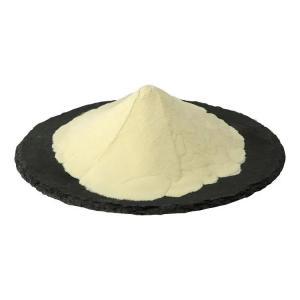Phosphatidylserine: soothes vascular smooth muscle cells
Time:2025-02-17Phosphatidylserine soothes vascular smooth muscle cells through several mechanisms:
Ⅰ. Regulation of Intracellular Calcium Ion Concentration
The contraction of vascular smooth muscle cells (VSMCs) is closely related to intracellular calcium ion (Ca²⁺) concentration. Phosphatidylserine can act on calcium ion channels in the cell membrane and regulate their activity in two ways:
It may inhibit the opening of calcium ion channels, reducing the influx of extracellular calcium ions into VSMCs.
It can also influence calcium release and uptake from intracellular calcium stores, such as the sarcoplasmic reticulum.
By reducing the increase in intracellular Ca²⁺ levels, phosphatidylserine prevents VSMCs from obtaining sufficient calcium ions to initiate contraction. This keeps the cells in a relaxed state, thereby achieving the effect of vascular smooth muscle relaxation.
Ⅱ. Modulation of Signal Transduction Pathways
1. G Protein-Coupled Receptor (GPCR) Pathway
Phosphatidylserine can interact with G protein-coupled receptors (GPCRs) and participate in intracellular signal transduction. When a signaling molecule binds to a GPCR, it activates G proteins, which subsequently influence downstream effectors. Phosphatidylserine can regulate this signaling process by:
Inhibiting phospholipase C (PLC) activity, reducing the production of inositol trisphosphate (IP₃) and diacylglycerol (DAG).
IP₃ usually promotes calcium release from intracellular stores, increasing contraction.
DAG activates protein kinase C (PKC), which phosphorylates contraction-related proteins in VSMCs, leading to contraction.
By interfering with this pathway and decreasing IP₃ and DAG levels, phosphatidylserine inhibits contraction-related signaling, thereby promoting vascular smooth muscle relaxation.
2. Nitric Oxide (NO) Signaling Pathway
Phosphatidylserine can indirectly enhance nitric oxide (NO) production or amplify its effects. NO is a key vasodilator that diffuses into VSMCs and activates guanylate cyclase, increasing intracellular cyclic guanosine monophosphate (cGMP) levels. cGMP then activates cGMP-dependent protein kinase (PKG), which:
Dephosphorylates myosin light chains, reducing the interaction between myosin and actin, leading to VSMC relaxation.
By enhancing NO-mediated vasodilation, phosphatidylserine contributes to vascular relaxation and improved blood circulation.
Ⅲ. Regulation of Membrane Fluidity and Stability
Phosphatidylserine is an essential component of the cell membrane, playing a role in membrane fluidity and stability. Proper membrane fluidity is crucial for the normal function of: Ion channels (such as calcium and potassium channels).
Receptors and signal transduction proteins involved in vascular tone regulation.
When phosphatidylserine levels are optimal, the membrane remains in a fluid and functional state, facilitating proper ion channel function and signal transduction. If membrane fluidity is disrupted, ion channels may become dysfunctional, leading to abnormal VSMC contraction. By maintaining membrane integrity, phosphatidylserine ensures that VSMCs stay in a relaxed physiological state, preventing excessive contraction.
Ⅳ. Anti-Inflammatory and Antioxidant Effects
Inflammation and oxidative stress can increase VSMC contractility, leading to vascular dysfunction. Phosphatidylserine exerts anti-inflammatory and antioxidant effects by:
Inhibiting the release of inflammatory mediators and suppressing inflammatory signaling pathways, reducing the stimulatory effects of inflammation on VSMCs.
Enhancing cellular antioxidant defenses, neutralizing free radicals, and mitigating oxidative stress-related damage to VSMCs.
By reducing inflammation and oxidative stress, phosphatidylserine helps preserve the normal function and structure of VSMCs, allowing them to remain in a relaxed state and contributing to overall vascular health.


 CN
CN





